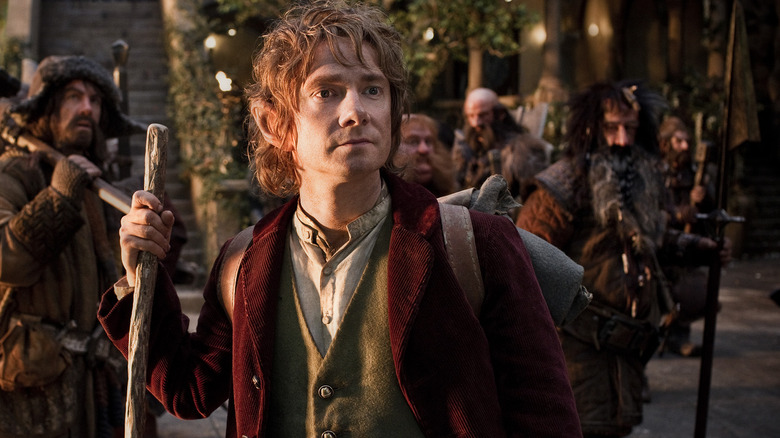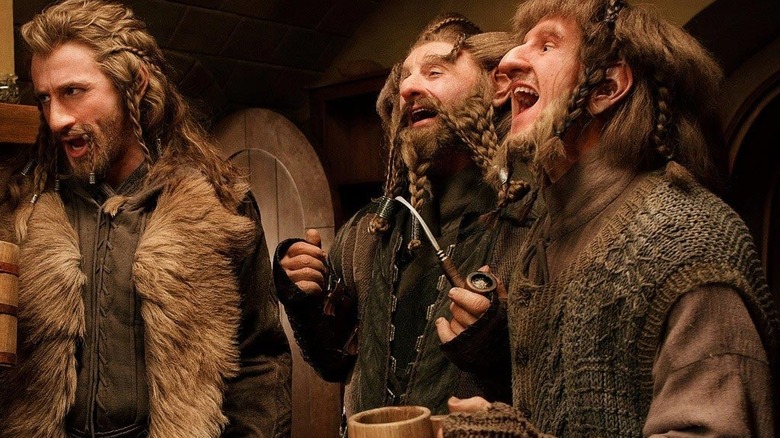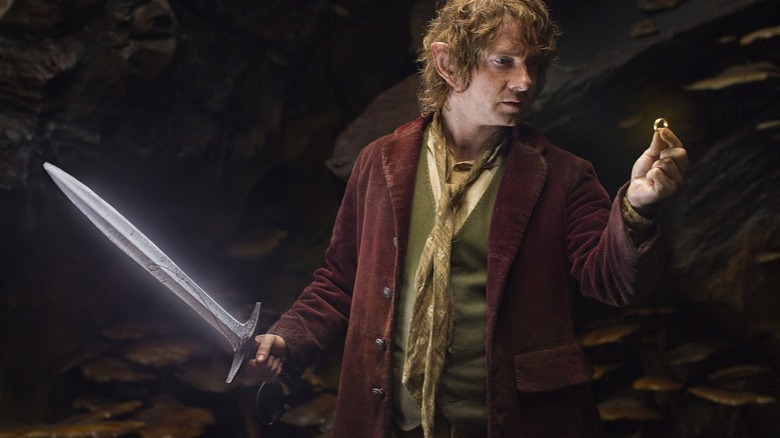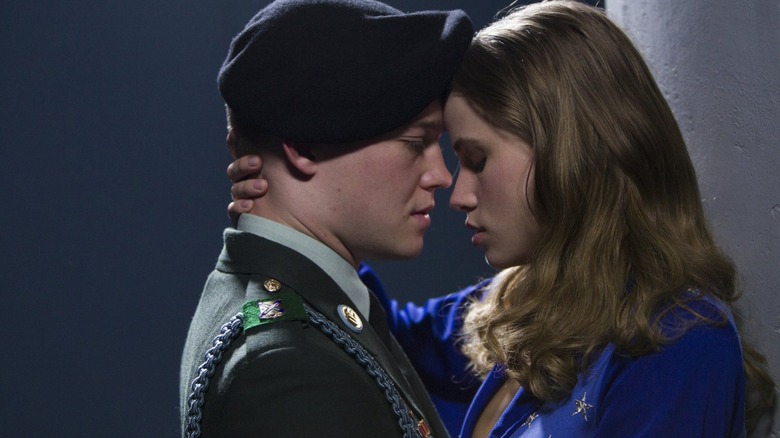Peter Jackson Knows The First Hobbit Film Didn't Nail 48 Frames Per Second
When Peter Jackson announced he was going to make a trilogy of prequel films to his hit "Lord of the Rings" movies, the world reacted with cautious pessimism.
Many of us, after all, were old enough to remember the last time a well-moneyed, high-profile "prequel trilogy" darkened our doorsteps in the early 2000s, and those films — "Star Wars" prequels — proved to be cold, clunky technical exercises full of clumsy plotting and bad dialogue. Expansion of canon, we learned, wasn't always a good thing. Skepticism also ran high because Jackson famously didn't want to make any "Lord of the Rings" prequel movies, choosing instead to develop a pair of films based on J.R.R. Tolkien's 1937 novel "The Hobbit" that he intended to pass off to director Guillermo del Toro. For various reasons, that version of the project didn't come together, and Jackson elected to direct the films himself, expanding the story into three epically long films. A strained feat, given that "The Hobbit" was only 310 pages. After a quick lawsuit from the Tolkien estate, "The Hobbit" was set to begin shooting in 2010.
Since the release of the last "Lord of the Rings" movie, Jackson had only become increasingly interested in the evolution of motion picture technology. "Lord of the Rings" was notably an SFX technical marvel, and Jackson seemingly wanted to do explore a new kind of technical "dazzle" for "The Hobbit." He came to confront a piece of conventional wisdom about filmmaking: that movies must be presented at 24 frames per second. As such, the new movies — perhaps notoriously — would be presented in 48fps.
In 2018, in an interview with Uproxx, Jackson admitted that 48fps might not have been a good idea.
High frame rate
The earliest film cameras were hand-cranked, as were some early projectors; imagine having to run an entire feature cranking a handle at juuuust the right speed. Also, as many movies were presented with live music instead of recorded scores, there was no codified standard as to how quickly film strips needed to run through a camera or projector. Most filmmakers settled anywhere between 16 and 24fps. In terms of the human eye, incidentally, the illusion of movement can be achieved with as few as 10 frames per second.
When synchronized sound became part of the filmmaking process, a more accurate, standard frame rate was required to accommodate, and enterprising filmmakers discovered that 24fps was the ideal threshold for achieving an accurate visual that matched with sound. Higher frame rates were experimented with, but 24 was the most economical; it used less film stock. It was also a compromise, as projectionists would generally run movies faster than they were shot, often projecting at about 26 to 30 fps. 24 fps became the standard, and it remains so to this day.
Jackson wanted to change the standard. In a digital age, when film stock was no longer a concern, filmmakers now had the freedom to monkey with digital cameras and find whatever frame rate they wanted. Higher frame rates had been used on TV for years (Betamax video, the format used for news broadcasts, ran at about 30 fps), so why not let movies try them out?
"The Hobbit: An Unexpected Journey" was released in some theaters in 3-D in 48 fps. The people hated it immediately. Critics said it must be seen to be disbelieved. The images were too crisp, too clean, too much like a reality show on TV.
It got knocked down; can it get up again?
Jackson's experiment, in short, was an immediate failure. While some critics tried to give Jackson the benefit of the doubt, arguing that audiences were perhaps simply not trained to consume and accept cinema as anything other than 24 fps, many couldn't get past the weird, artificial smoothness of the image. To Uproxx, four years after the films had come and gone, Jackson admits that even he was a little too eager with the technology, and that a lot of adjustments needed to be made with each progressive film. When asked if 48fps was still the way of the future, he said:
"Well, I don't know. I mean, it's really up to individual filmmakers. I was pleased by the time we finished. But it took us the three Hobbit movies to figure out how to color correct it and grade it properly so it didn't look, you know, the first one wasn't ... We made a lot of changes after the first Hobbit movie, and then the second, and then the third."
The interviewer noted, as many did, that it took several minutes for his eye to adjust to seeing such a frame rate on a big screen. Jackson agreed that it looked, in his words "shiny." It took three full films to solve the small problems:
"I think we took a different approach to the color timing and the grading. And, obviously, still get rid of some of sort of the 'shiny' look that the first one had. And then I think we were getting to feeling pretty good towards the end. It's up to filmmakers and I know that Ang Lee, I believe, is looking at doing a movie in high speed."
Ang Lee's long halftime walk
Jackson was right. Ang Lee had also been experimenting with high frame rates. Notoriously, Lee's 2016 film "Billy Lynn's Long Halftime Walk" was presented at a whopping 120fps, shot with 4K cameras and presented in 3-D. Both Jackson and Lee were keen on stretching what film visuals could achieve. By 2016, digital film cameras were to the point where they could communicate far more visual information than a standard 35mm film camera, a clear indicator that cinematic visuals had evolved into a new animal. Lee and Jackson wanted to continue the trend.
Jackson's obsession with new film tech found him creating an unusual 2018 documentary project called "They Shall Not Grow Old," for which Jackson took old silent footage of British soldiers fighting in the trenches of World War I, and used cutting edge technology to colorize the footage, digitally "fill in" missing frames, bringing it to a traditional 24fps, present it in 3-D, and hire lip-readers and voice actors to give the soldiers voices. It's a fascinating experiment, although historians and purists may bristle at the effect.
In 2019, Lee made a sci-fi thriller with Will Smith fighting a de-aged version of himself. "Gemini Man" was also presented in a high frame rate, and the criticisms remained. It almost looked too real. Costumes now looked like costumes and not merely clothes worn by characters. The aesthetic wasn't catching on.
Jackson will likely continue to push film tech forward, although horror nuts in the audience are likely secretly hoping for a return to Jackson's early splatter phase. For some, Jackson is the "Lord of the Rings" guy. For others, he will always be the weirdo who made "Meet the Feebles."



